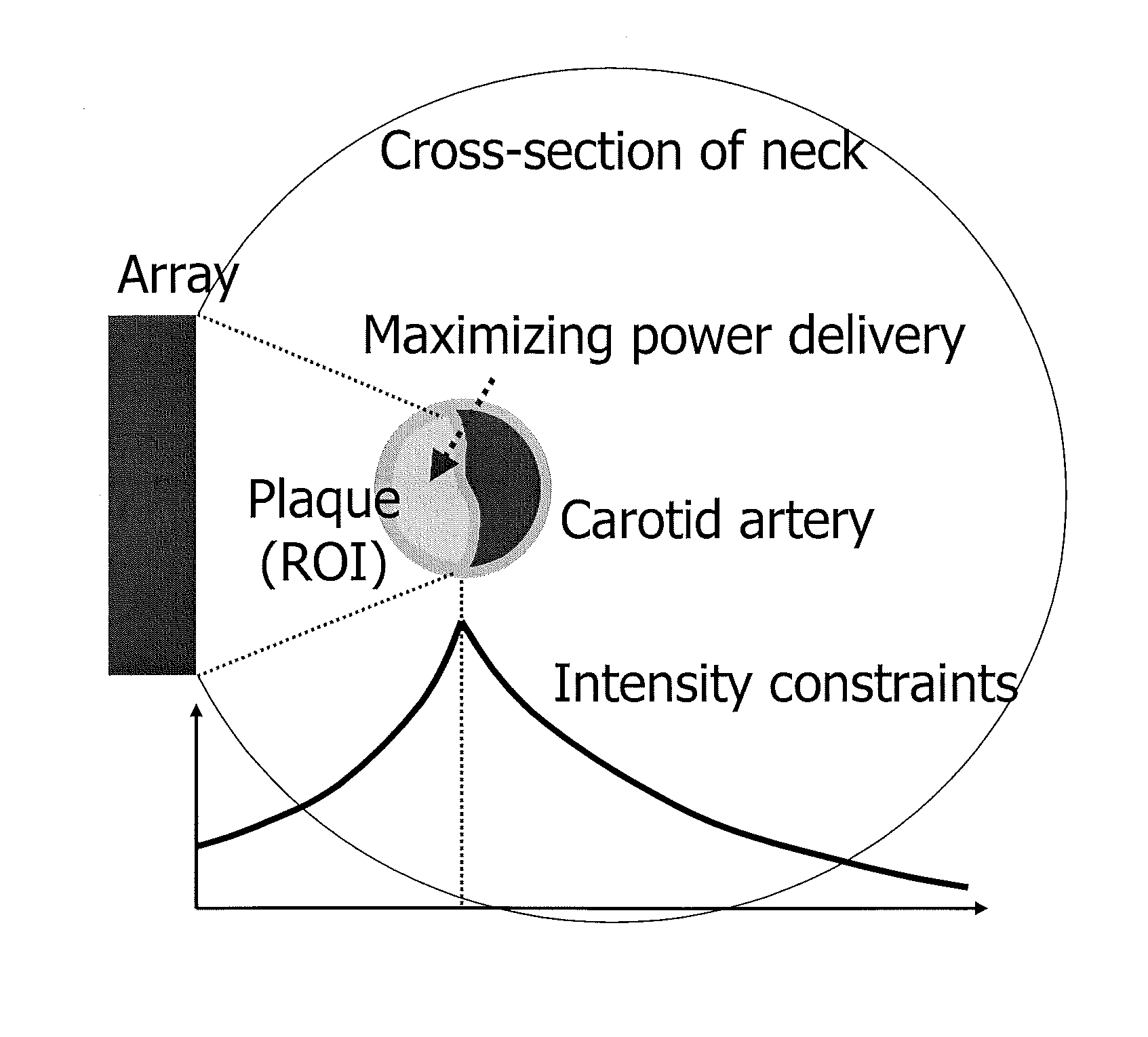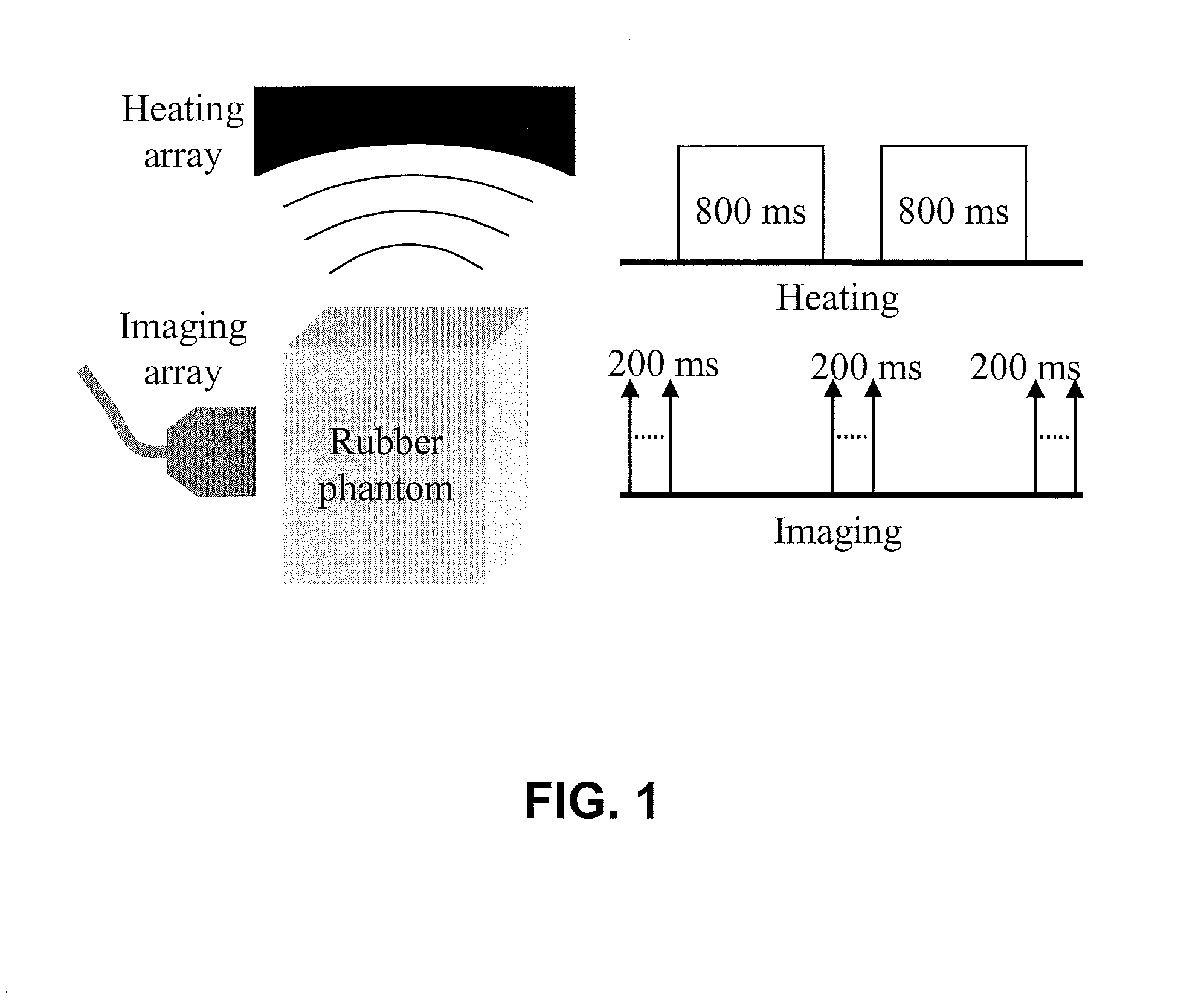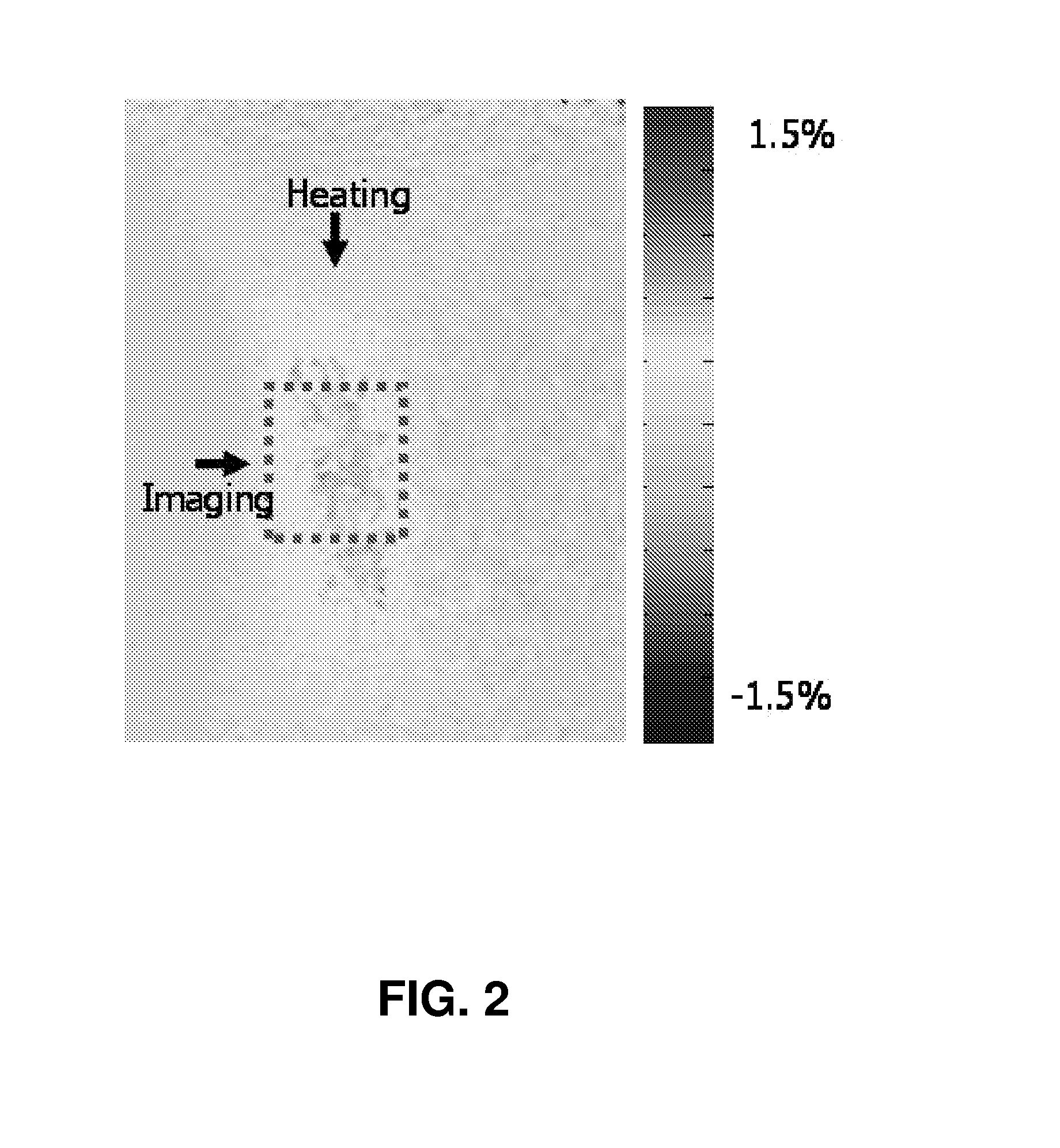Thermal strain imaging of tissue
a tissue and thermal strain technology, applied in the field of thermal strain imaging of tissue, can solve the problems of vascular disease, significant health problems, invasive techniques, etc., and achieve the effect of improving imaging resolution and contrast, and improving detection and diagnosis
- Summary
- Abstract
- Description
- Claims
- Application Information
AI Technical Summary
Benefits of technology
Problems solved by technology
Method used
Image
Examples
Embodiment Construction
Rabbit Kidney Model
[0034] It is well known that lipids have a negative temperature dependence of the sound speed, whereas water-based tissues have positive temperature dependence [F. A. Duck, Physical Properties of Tissue. London: Academic, 1990]. Controlled local temperature modulation can be used to image the spatial distribution of temporal strain produced by changes in the sound speed [T. Bowen, “Radiation-induced Thermoacoustic Soft-Tissue Imaging,” IEEE Transactions on Sonics and Ultrasonics, vol. 29, pp. 187-187, 1982]. The opposite sign of the two different tissue types creates the contrast required for resolving the fatty tissue from surrounding water-based tissue.
[0035] Using a 2-D phased array in combination with a conventional ultrasound scanner, the feasibility of ultrasound inducing and imaging of thermal strain is demonstrated. Among other heating sources, including microwave [Y. Shi, R. S. Witte, and M. O'Donnell , Identification of Vulnerable Plaque Atheroscleroti...
PUM
 Login to View More
Login to View More Abstract
Description
Claims
Application Information
 Login to View More
Login to View More - R&D
- Intellectual Property
- Life Sciences
- Materials
- Tech Scout
- Unparalleled Data Quality
- Higher Quality Content
- 60% Fewer Hallucinations
Browse by: Latest US Patents, China's latest patents, Technical Efficacy Thesaurus, Application Domain, Technology Topic, Popular Technical Reports.
© 2025 PatSnap. All rights reserved.Legal|Privacy policy|Modern Slavery Act Transparency Statement|Sitemap|About US| Contact US: help@patsnap.com



